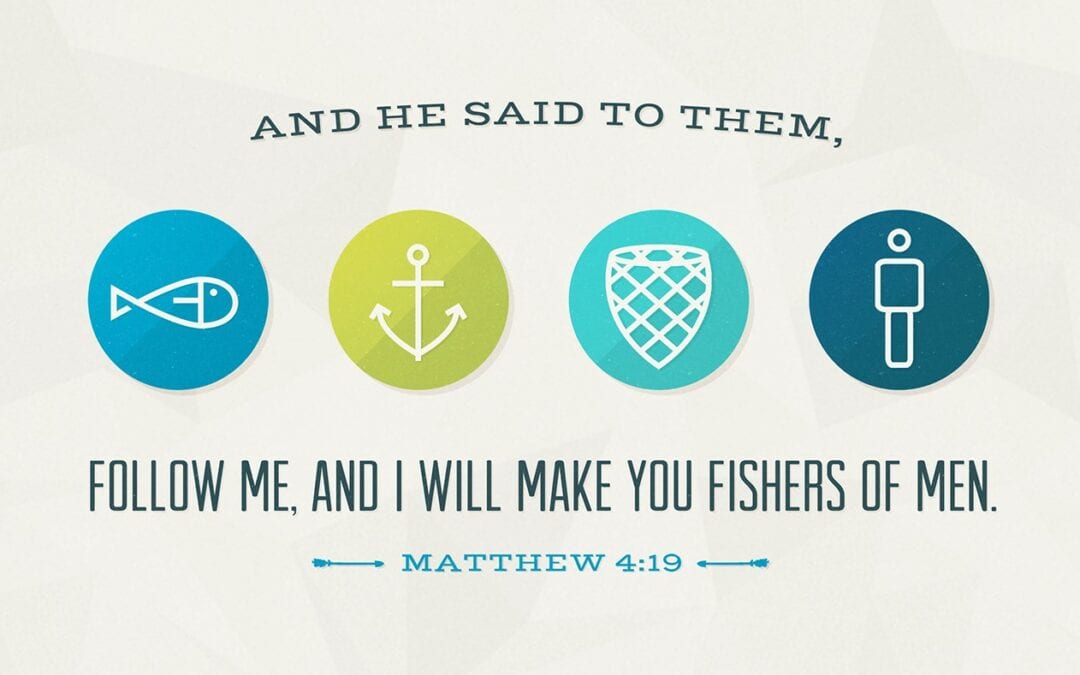I’ve mentioned before that the origin of the English word disciple shares similar etymology to the Greek word mathetes (ma-they-tays). Disciple is the Latin translation of the Greek word, and both mean, essentially ‘pupil’ or ‘learner’. It has the same root as the word discipline, a word that can have both negative and positive implications. The broadest understanding of the word is ‘training that corrects, molds, or perfect the mental faculties or moral character’ (Webster’s Dictionary, 11th Ed.).
One of the clear outcomes from our visioning process of a year ago was that we feel God calling us to be a church of ‘disciple-makers’. The visioning committee wrestled over how to best articulate this in a way that captures the Biblical call of Matthew 28:18-20, but also attaches itself neatly to a 21st century Canadian context. ‘Disciple-makers’ may not adequately capture the essence for a contemporary audience, but it is, in the end, where we settled. Where it comes from is a twofold desire on our part as a congregation: a desire to grow in our own knowledge of Jesus and what it means to follow him (be his disciples), and a desire to help others who do not (yet) know Jesus to gain that same knowledge and grow in it. A healthy church has a good balance of both. In fact, we cannot be good disciples if we are not making disciples. The desire is good and healthy, and I believe we earnestly want to grow in this area as a church. Where the challenge comes, I think, is in answering how we make disciples.
The original ‘disciples’ in Christian heritage are the twelve who spent the last 3 years of Jesus’ earthly life with him. They essentially spent every moment of every day with him for the duration of his ministry, through his death and resurrection. Upon his ascension, he declares to this inner circle: “All authority in heaven and on earth has been given to me. Therefore go and make disciples of all nations, baptizing them in the name of the Father and of the Son and of the Holy Spirit, and teaching them to obey everything I have commanded you. And surely I am with you always, to the very end of the age” (Matthew 28:18-20). That Jesus intends for this ‘disciple-making’ process to carry on beyond the first generation of believers is made clear by his final statement: “to the very end of the age”; that is, until Jesus returns. To the best of my knowledge (I’m being facetious), Jesus has not yet returned and so the disciple-making process carries on to the present day. We stand in a lengthy heritage of disciple-making that spans thousands of years. Before I tackle the command to teach “them to obey everything I have commanded you”, I want to take a moment and reflect on how the process of disciple-making has changed over the millennia. Keep in mind these are my observations and not intended to read like an exhaustive study or text-book on the subject.
When we hear the words teach, teacher, or student, we immediately think of school. And certainly over the last several hundred years, this is how knowledge was transmitted from the learned to the unlearned; from the elder to the younger. In that time, we have developed an elaborate and relatively well-functioning system in the Western world whereby a group of students are placed in a controlled setting where knowledge is transmitted (verbal, visual, and kinesthetic) from a teacher to the students. Students progressively work their way up through grades until they have reached an acceptable level of knowledge that they can go out and join the workforce. Though this is a relatively recent phenomenon within the larger framework of human history, we did not, I think, happen upon it by accident.
It did not take long after the first generation of Jesus’ disciples that specialization began to emerge among the followers of ‘the Way’. After all, the disciples would have followed Jesus’ model for mentorship and education by taking unto themselves a small band of followers to whom they would transfer the knowledge that Jesus had given them. It is, in ways, the justification for the Papal See. In the Roman Catholic tradition, the Pope of Rome can trace his discipleship lineage all the way back to the Apostle Peter. It has been said that the Pope is the disciple of the disciple of the disciple of the disciple … and so on, of Peter. The hierarchy of the Roman Catholic church suggests that the clergy also stand within that same tradition. To me it is obvious how, over time, church evolved into something the priests participated in and the congregants observed, by the time of the Protestant Reformation. One of the key recoveries of the Protestant Reformation was, and is, the concept of the “priesthood of all believers” – there is no hierarchy in the followers of Jesus… Or is there?
By the time of the Protestant Reformation, the European church had a long history of established practices in the services of the church. Some of that naturally carried over into the newly established churches in the Lutheran, Reformed, and Anabaptist traditions. The church gathered weekly to participate in the sacraments and to learn about the Word of God. Particularly in the reformed traditions, the pulpit took the place of the chalice and table, as teaching the people the essentials of the Christian faith from the Bible became paramount. This is the reason why we have the Heidelberg Catechism. The ‘common folk’ did not have Bibles and needed to be taught by the learned so that they could apply the principles of Scripture to daily living. One speaking to many. In ways no different than Jesus’ Sermon on the Mount/Plain, for example. This was the established way that people would learn the Bible. A select few would receive the call from God to increase their education and thereby become the next generation of specialists to transmit this knowledge. But what of the rest? If there is not supposed to be a hierarchy of discipleship, how do we classify the ‘crowd’ that showed up every Sunday morning (and evening in some traditions)? If they are not disciples in the same way these other folks are, does that mean we expect less of them? Inadvertently, I think we have historically come to the conclusion that the answer to that question is ‘yes’. After all, not everyone can pursue the call into full-time ministry as a pastor, teacher, or missionary! I think of Paul’s teaching on the gifts of the church that we cannot all have the same gift(s).
Nonetheless, this method of knowledge transfer has persisted to the present day. It has also branched out into the public and private education system as I have already noted. But, we are realizing, something seems amiss. Just like not all adults learn the same, not all children learn the same. The professionalization of the educational enterprise has resulted in a cookie-cutter approach to citizen-forming. The same holds true for what we do in church: a cookie-cutter approach to disciple-making that doesn’t fit every character and learning style. Thus, we have seen a recent movement evolve that focuses on a more interactive learning environment with tempered expectations in order to meet the needs of every learner. What we are finding is that this approach, too, has its casualties. Because, if we are honest, this is simply a new cookie-cutter mold we are using. Granted, it does not have the same one-to-many ratio of knowledge transmission, but it sacrifices content for equal opportunity. The truth is, we need both.
There was a time where the education of children happened primarily in the home. In many cultures today this is still the case. A child would not only learn the basics of “reading, writing, and arithmetic”, but would typically learn the trade and craft of the father (if a boy), and how to tend the home (if a girl). In a home standing in the Jewish-Christian tradition, they would also learn about Jesus and Scripture from their parents (typically the father). With the decrease in ability to multiply trades and crafts ad infinitum, an increase in the number of employable skills, and increase in educational and career opportunities for women, this model has all-but gone out the window. But along with it has gone the intentionality of parents to shape and educate their children in other areas of life. That has now become the specific (and specialized) task of the ‘teacher’. Unwittingly, we can absolve ourselves of the responsibility to teach our children more than basic ethics, thereby depriving them of something essential for their development as people, citizens, and followers of Jesus.
Now I want to return to the disciple-making model of Jesus and what we can learn from it for our current context.
Something we often overlook (and collectively know little about) in our studies of Jesus is that he stands in a tradition known as the Rabbinic tradition. By all intents and purposes, Jesus was a first century Rabbi, similar to many of his contemporaries. Of course, there was something significantly different about Jesus’ teaching, purposes, mission, and ministry, but his method of knowledge transmission was very much the same as other Rabbis. Although I could spend several more paragraphs describing the Rabbinic nature of Jesus’ discipleship model, I want to simply highlight the key ingredients and reflect on how they might impact our model of disciple-making as Calvary CRC.
First, as I have already noted, Jesus took for himself a small band of followers. Yes, he taught the crowds, but his true disciples were the twelve who formed that inner circle. This was intentional, just like other rabbis. In order for knowledge to transmit well, it is best done in small groups. Second, Jesus’ “classroom” was his life. The disciples spent every moment with Jesus, not only learning what he taught, but imitating what he did. Often in his ministry, Jesus invites the disciples to participate in his ministry and miracles (e.g. feeding the 5,000, sending out the 72). Third, after sufficient time spent with Jesus learning to live like him, he sends out his disciples to teach others in the same way he taught them. Thus, the knowledge they transmitted could not have been simply head knowledge alone, but the shaping of character through osmosis. In short, we might summarize Jesus’ discipleship model like this: 1) I do, you watch 2) I do, you help 3) You do, I help 4) You do, I watch. This is not a perfect summary of Jesus’ approach, but it does capture the essence of rabbinic discipleship. When Jesus commands the disciples to teach “them to obey everything I have commanded you”, this is what he had in mind. This is further reinforced by the connection with baptism. To be baptised into the name of Jesus is to take on a new identity: the identity that he gives us.
Let’s now return to the original conundrum I posed: how do we make disciples? What does it mean for Calvary CRC to be a church of disciple-makers?
For an answer to that, I think I will wait for the next blog entry.


Recent Comments